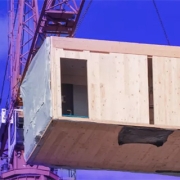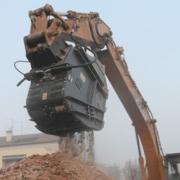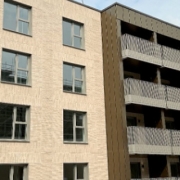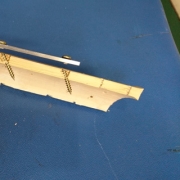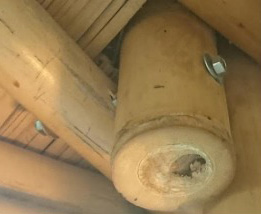Building the Future: The Crucial Role of Structured Cabling in Modern Construction Access Points
In today’s rapidly evolving world of technology and connectivity, the infrastructure that underpins our modern constructions plays a pivotal role in shaping the future. However, it’s not just large smart cities and data centers reaping the benefits. Right here in Florida, structured cabling is transforming buildings of all sizes and enabling the digital demands of the future.
The global momentum towards hyper-connectivity and smart capabilities has raised expectations for modern buildings to seamlessly incorporate the latest technologies. Structured cabling provides the ideal foundation, allowing innovations to be smoothly integrated today and accommodating next-gen demands down the line. In this article, let’s explore the crucial role of structured cabling in modern construction access points.
The Evolution of Structured Cabling in Modern Construction
The construction industry has come a long way from the days of traditional, disorganized wiring methods. Structured cabling is the design and installation of an end-to-end cabling system that provides a comprehensive telecommunications infrastructure. This neat, orderly approach maximizes efficiency and minimizes errors.
With the structured cabling market size projected to double by 2029, reaching USD 21.48 billion, it’s evident that this technology is not just a passing trend. Its integration into the very fabric of our urban landscapes, particularly in the realm of smart cities, is a testament to its transformative power.
Here in Florida, structured cabling Fort Lauderdale has become a staple in modern construction projects, enabling buildings to fulfill the connectivity needs of today while readily adapting to the demands of tomorrow. The numerous benefits of structured cabling such as easy management, flexibility, redundancy, and future-proofing, highlight why this infrastructure is crucial for buildings across sectors.
Additionally, as per MarketsandMarkets, the global structured cabling market exhibited robust growth of 22% in 2022 to reach USD 13.24 billion, up from USD 10.85 billion in 2021. This upward trajectory is expected to continue with a projected CAGR of 9.2% from 2022 to 2029, indicating the rising prominence of structured cabling in modern construction and infrastructure projects worldwide.
The Integration of Structured Cabling in Smart Cities
Smart cities aim to improve infrastructure through digital transformation and connectivity. Structured cabling is pivotal in making this vision a reality across urban spaces.
For instance, in November 2021, the Indian government announced a massive investment of around USD 700 billion for smart city projects over the next decade. Structured cabling will be fundamental in supporting the IT infrastructure and offering seamless 5G, Wi-Fi 6, and IoT capabilities that are hallmarks of smart cities.
Additionally, in July 2022, the Thailand government planned to build USD 37 billion worth of smart cities near Bangkok. Global investments will flow into these futuristic landscapes, enabled by high-performance structured cabling systems meeting the demands of sustainability, mobility, and technology.
As urban areas continue to evolve, structured cabling will underpin their efforts to become more connected, responsive, and technologically advanced.
The Impact of Structured Cabling on Data Centers
Data centers are the core hubs facilitating our digital world. Structured cabling is crucial in effectively meeting the connectivity and transmission needs of these mission-critical facilities.
The COVID-19 pandemic necessitated investments in stronger IT and telecom infrastructure worldwide. This resulted in an enormous demand for high-quality cabling.
In 2021, approximately 7.2 million data centers were established globally to meet rising digital requirements. Structured cabling enables seamless management and maintenance of the complex wiring in data centers. It also minimizes disruptions and enhances security.
This pie chart illustrates the breakdown of the global structured cabling market in 2021 based on application segments. Data centers hold the largest share at 24% of the total market, underlining their immense dependency on structured cabling for their communication networks and infrastructure.
LAN networks account for 22% market share, while wireless networks make up 18%. The remaining 36% share is attributed to other applications such as building automation, factory automation, and infrastructure for smart cities.
This chart clearly depicts how data centers are currently the biggest adopters of structured cabling solutions, followed by enterprise and telecom network applications. As data center construction booms worldwide, their share of the structured cabling market will continue to grow in the coming years. However, 5G and Wi-Fi 6 deployments will also necessitate advanced structured cabling systems, thereby increasing the share of wireless networks.
The Future of Structured Cabling: 5G and Beyond
Connectivity needs are continuously evolving, and structured cabling solutions are keeping pace. The rising prominence of 5G and Wi-Fi 6 is creating colossal demand for cabling that can support fast, reliable wireless transmission across networks.
With 5G deployments growing globally, structured cabling systems are being enhanced to handle the massive bandwidth and ultra-low latency required. Solutions like shielded cabling, fiber optic cables, Category 6 and 6A cabling are emerging to address these needs.
As digital transformation accelerates worldwide, our cabling infrastructure must continuously evolve to support emerging demands. Structured cabling is the key to building future-ready networks and construction access points.
Frequently Asked Questions
Why is structured cabling important?
A well-designed and perfectly installed structured cabling system provides a robust infrastructure that offers flexibility, maximizes system availability, ensures redundancy, and future-proofs the usability of the cabling system.
What is a structured cabling system?
Structured cabling is the design and installation of a cabling system that caters to modern and future cabling needs, ensuring that future hardware requirements are supported.
How does structured cabling work?
In a structured cabling system, patch panels and trunks are utilized to create a structure that allows hardware ports to connect to a patch panel at the top of a rack.
Final Thoughts
It’s evident that structured cabling is fundamentally transforming modern construction landscapes ranging from smart cities to data centers. With substantial investments and growth across the world, structured cabling will be integral to fulfilling the connectivity needs of tomorrow.
By taking an organized, forward-thinking approach, structured cabling minimizes errors, enhances efficiency, and ensures that our construction access points are ready for what the future brings. The incredible innovations on the horizon will all rely on the backbone provided by structured cabling solutions.
Source: Film Daily



